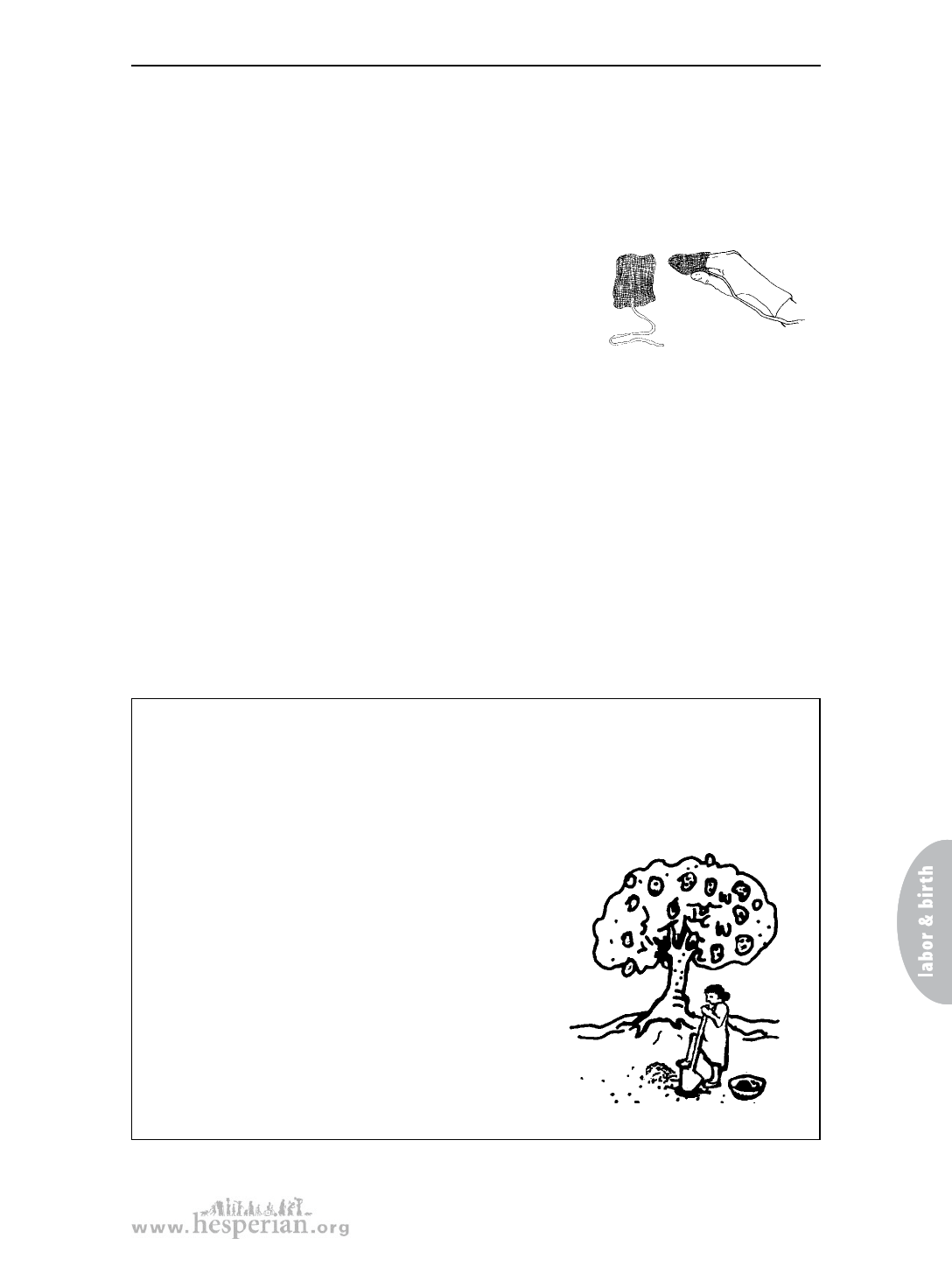
Bleeding after birth
If the woman is bleeding so heavily that she will probably die before getting
help, try to take the pieces out of the womb yourself.
1. Scrub and put on sterile gloves.
2. Fold a piece of sterile gauze over your fingers. The womb is very slippery, and
the gauze will help you scrape up small pieces of placenta. (Or tie a string to
a strong piece of woven material like gauze,
sterilize it, and keep it in your birth kit. The string
will stay outside the mother so that you can easily
pull the gauze out.) Be sure to use strong material
that will not break apart and leave bits inside the
mother’s womb.
3. Reach your gauze-covered fingers into the mother’s womb and try to wipe
out any pieces of placenta or membranes that are inside. This will be very
painful for the mother. Make sure to explain what you are doing and why
you are doing it — that any pieces of tissue left in the womb will make it
impossible for her womb to contract and stop bleeding.
4. After the pieces are removed, give antibiotics to prevent infection —
see page 231.
Even if you succeed in removing the piece of placenta from the womb, the
mother still needs medical help. She may need a blood transfusion, and she
is in danger of getting a serious infection. Take her to a medical center as
soon as you can.
What to do with the placenta
Different people do different things with the placenta. Some burn it.
Some dry it to use as medicine. Some just throw it away. For many people,
burying the placenta is an important ritual. In some communities,
people must return to the site where their
placenta is buried before they die.
Burying the placenta is also a safe way to
protect the community from the germs that
live inside it. If you bury the placenta, make
sure to dig a deep pit to keep animals from
digging it up. If you do not want to bury the
placenta, burning it is another safe way to
dispose of it. See page 67 for more information
on protecting the community from germs that
live in blood.
235
A Book for Midwives (2010)